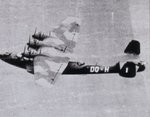vinnye
Senior Airman
The Catalina was an amazing airplane and used extensively in many and varied roles and theatres of operation. But the Short Sunderland gets my vote. It helped to combat the U boat threat at a crucial time in the war, rescued crews of torpedoed boats and had good range and payload.
Short Sunderland - Wikipedia, the free encyclopedia
Short Sunderland - Wikipedia, the free encyclopedia

